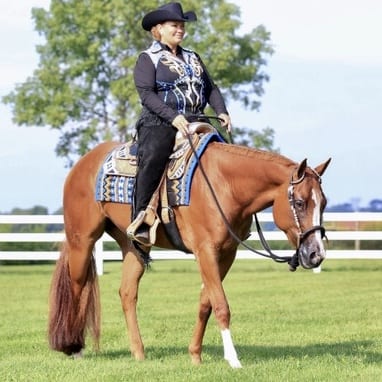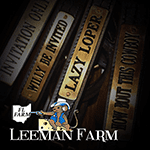Chances are, if you have been in the horse business for a hot minute, you have heard terms like, “that horse is great in its neck, too overdone, too low or too use-y.”
“Use-y,” of course, is not a real word, but it’s an actual term for horses that cannot hold their necks still. These are all slang terms to describe how horses hold their heads and necks while traveling.
In the western pleasure and hunter under saddle events, how a horse holds its neck is critical to how the horse performs. It could be argued that the neck is one of the hardest things to perfect. Some would say that if you pick out a prospect with a great neck, it will be a breeze, but the truth is that it’s a more complicated issue. Often, a horse can get so overdone with time, that it is nearly impossible to fix.
The first step in fixing anything is identifying the problem. So let’s break down the offenders. Keep in mind, we are talking about two disciplines. One where a horse is wholly turned loose and one where the horse is expected to sit on the bridle. We got some tips on correcting these problems from top trainers, Karen Hornick of Jamestown, Ohio and Joy Wheeler of Climax, North Carolina. Both ladies have shown English and western horses.
The Face Hider
 The face hider or “overdone” horse is one that likes to carry his chin behind the vertical. Horses are amazing animals; some are so smart they require only one ride to learn something. Horses that are particularly soft and supple to the bridle or very willing to please are likely to become overdone. It is near impossible to teach a horse anything without pulling on them.
The face hider or “overdone” horse is one that likes to carry his chin behind the vertical. Horses are amazing animals; some are so smart they require only one ride to learn something. Horses that are particularly soft and supple to the bridle or very willing to please are likely to become overdone. It is near impossible to teach a horse anything without pulling on them.
Chances are, if you have a horse like this and he has learned quickly how to stay backed off the bit, you will likely have to teach him how to become dull on the bit once again.
Hornick suggests, the first thing she does with any horse she receives in training is pull them off to the side. “In most cases, he needs to go back to basics and learn to follow his nose.”
She likes to take the horse in an inside tracking circle with him crossing his feet over while tracking the circle. “He learns he cannot hide his chin from you this way,” she explains. “Some people think that the less you pull on a horse, the less likely he is to get over bridled, but the opposite is true. Horses that become over bridled need to be pulled on more.”
The Puller
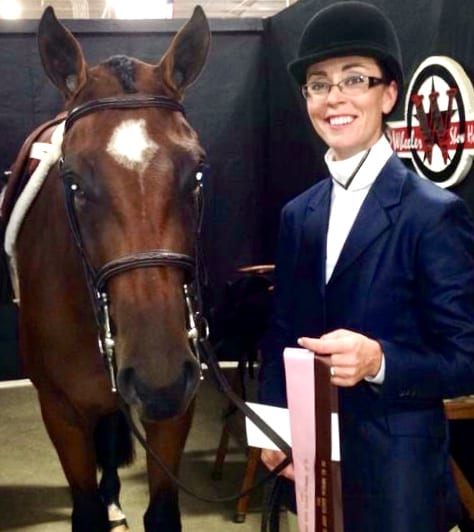 This horse can be the most frustrating to ride. This horse likes to pull the bridle out of your hands either down or out. Sitting on the bridle and pulling on the bridle are two things that cannot be confused, ever. Although pulling on the bridle can sometimes be a necessary step to learning how to sit on the bridle, but it’s a slippery slope.
This horse can be the most frustrating to ride. This horse likes to pull the bridle out of your hands either down or out. Sitting on the bridle and pulling on the bridle are two things that cannot be confused, ever. Although pulling on the bridle can sometimes be a necessary step to learning how to sit on the bridle, but it’s a slippery slope.
Trainer, Joy Wheeler believes horses like this most commonly have problems in their belly, meaning they do not yield to your leg in a way that makes them supple to the bridle. “Horses need to be ridden from leg to hand, not the opposite. I start by working out the problems I have when they are unresponsive to my leg first. Horses that tend to be too heavy or run through the bridle, always have issues in their body that need to be addressed first. When horses get flat, they start doing this and self-carriage has to get fixed to make their necks better.”
The Peanut Roller
 A true peanut roller is seldom seen anymore. For the most part, horse trainers these days are acutely aware of and make a real effort to make their horses stay level in their necks. But, occasionally you will see a horse that just loves to travel with their necks too low. As a hunter under saddle rider myself, I can attest to the security of feeling more in control when a horse’s neck is just slightly too low. Most joke that “too low” is never a bad thing, but that’s just a joke because it can be a very tough thing to fix when a horse makes it a habit, primarily a western pleasure horse because they cannot be held up every stride.
A true peanut roller is seldom seen anymore. For the most part, horse trainers these days are acutely aware of and make a real effort to make their horses stay level in their necks. But, occasionally you will see a horse that just loves to travel with their necks too low. As a hunter under saddle rider myself, I can attest to the security of feeling more in control when a horse’s neck is just slightly too low. Most joke that “too low” is never a bad thing, but that’s just a joke because it can be a very tough thing to fix when a horse makes it a habit, primarily a western pleasure horse because they cannot be held up every stride.
Hornick treats these horses precisely like she treats her two-year-olds that are just starting out. “It’s important to go back to basics with horses like this. Pulling them around helps them get balanced back out so they can hold their necks level. I also like to speed them up occasionally if my first things do not iron out the problem. Western riding pace always seems to help a horse get untracked and learning how to go forward to the bridle and become more balanced in their bodies.”
The User
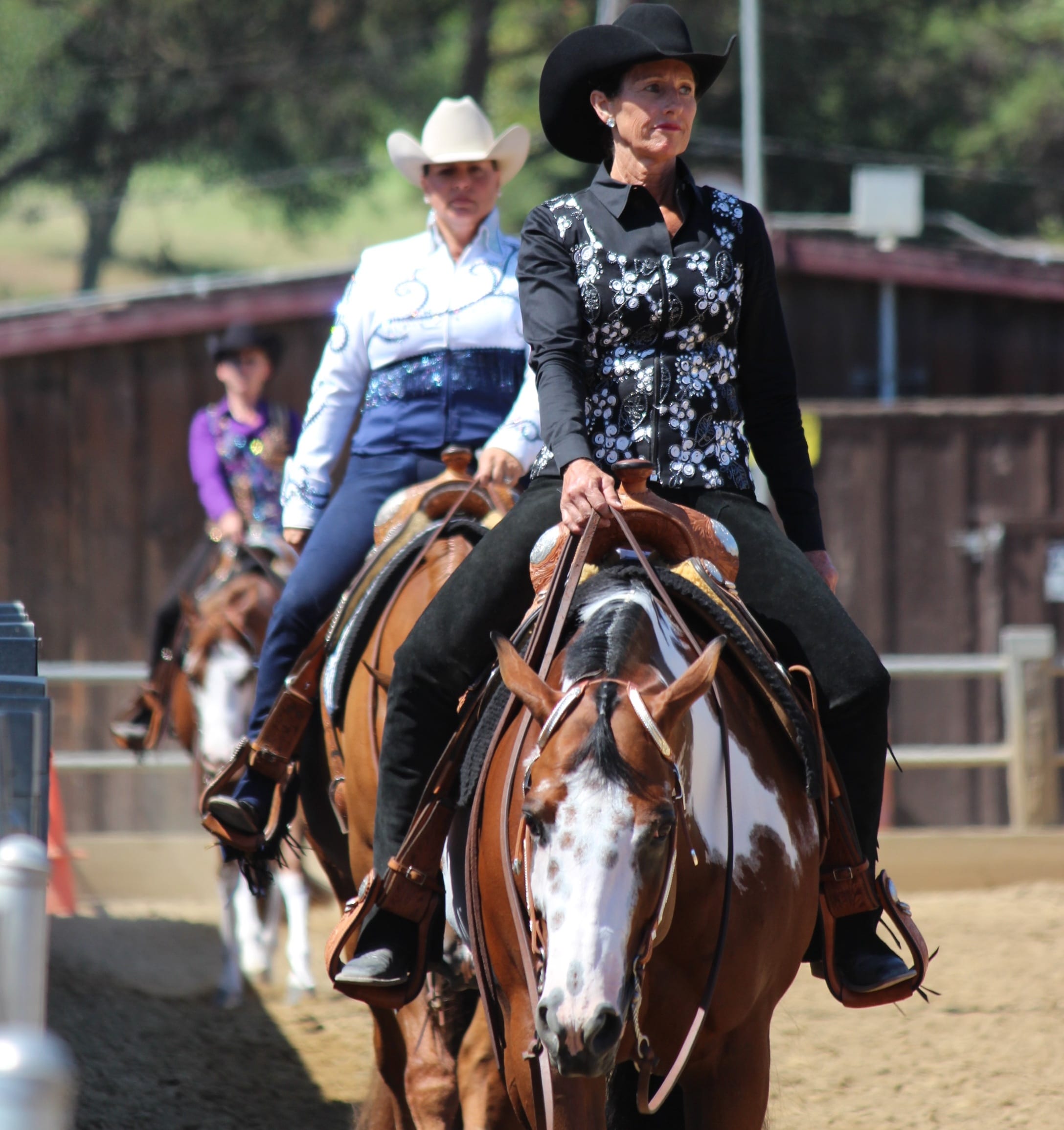 Have you ever seen a horse with a great rhythm that is so strong behind with so much cadence that it travels through their whole body and creates a pumping effect in their necks? Most often, this is easy to spot in young horses that are just learning how to hold their necks down and still lack the strength to keep their necks still. Sometimes, this becomes a habit that continues through to older years and has a lot to do with the way the rest of their body is traveling. The neck then becomes a secondary problem.
Have you ever seen a horse with a great rhythm that is so strong behind with so much cadence that it travels through their whole body and creates a pumping effect in their necks? Most often, this is easy to spot in young horses that are just learning how to hold their necks down and still lack the strength to keep their necks still. Sometimes, this becomes a habit that continues through to older years and has a lot to do with the way the rest of their body is traveling. The neck then becomes a secondary problem.
Wheeler too is a firm believer in pulling one off to the side, but prefers her outside rein. “I feel you can never truly get one to hold its neck still unless they are straight in their neck. I do not want them to carry their heads to the right or the left; I like them straight or slightly to the outside. Some horses that get too extreme to the inside or outside are the ones that have problems holding their necks still.”
The Perfect Student
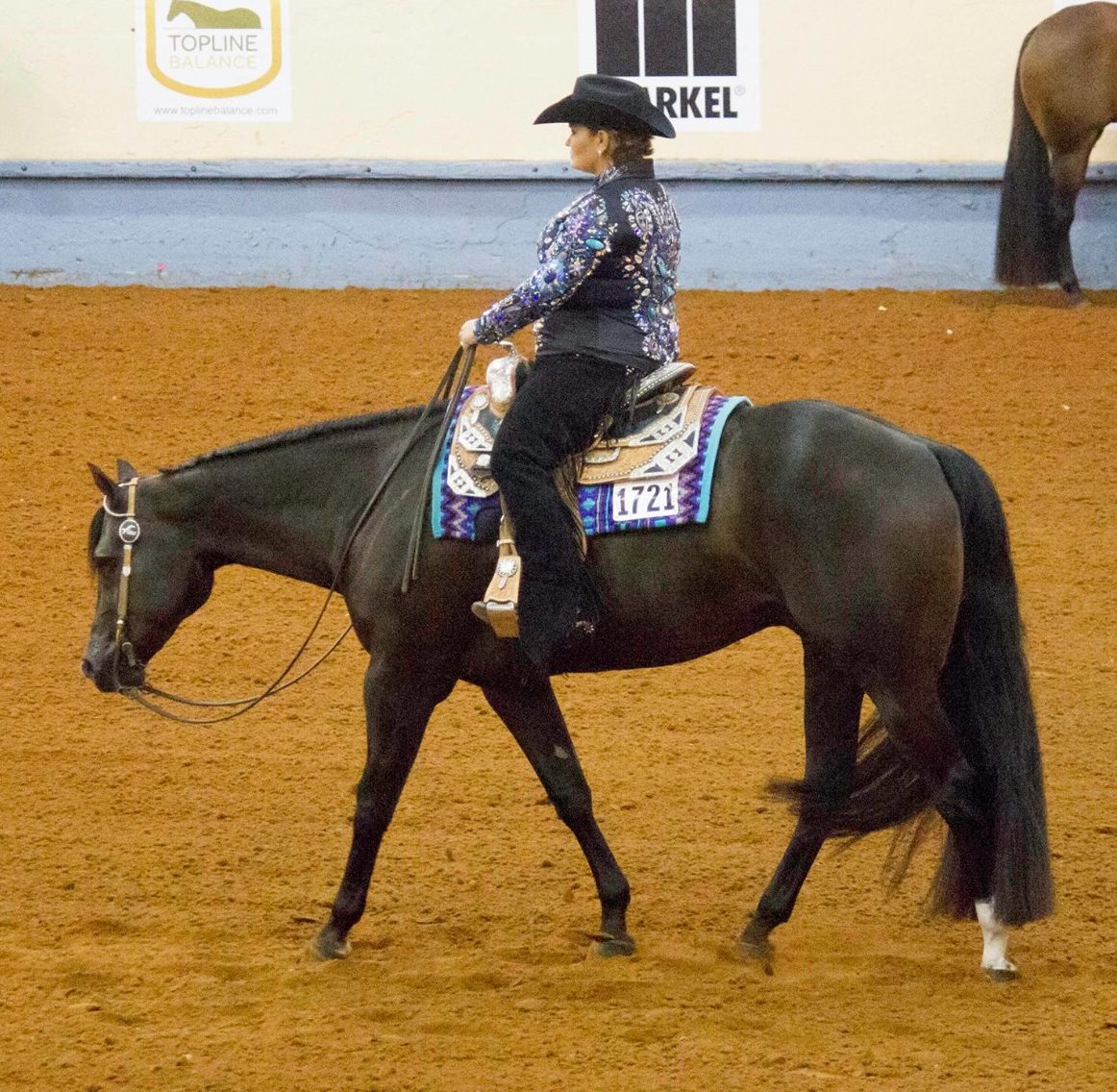 The perfect neck is the same, yes the same, for the western pleasure and the hunter under saddle. A horse’s neck should come out straight from the withers with the tips of the ears not being lower than the wither, and the nose should be perpendicular to the ground. For the hunter under saddle horse, we love them to look like they are correctly sitting on the bridle with no slack in the reins, and for the western pleasure, they should be floating on a loose rein.
The perfect neck is the same, yes the same, for the western pleasure and the hunter under saddle. A horse’s neck should come out straight from the withers with the tips of the ears not being lower than the wither, and the nose should be perpendicular to the ground. For the hunter under saddle horse, we love them to look like they are correctly sitting on the bridle with no slack in the reins, and for the western pleasure, they should be floating on a loose rein.
Let me make something clear about “The Perfect Student.” Not every horse can do it. There is a small percentage of horses that are flawless legged and also hold their necks correctly. It is what we are all striving for, but just like I will never be able to dunk a basketball like Lebron James, some horses will be working on and not perfecting their top lines their entire career. And just like anything involving horses, it can take years to get a horse to its peak in performance.
About the Author – Darla Lee was born in Apple Valley, California where she began riding horses at the age of nine. She later moved to Ohio where she attended College at the University of Findlay. She has worked for many top trainers in the industry and the past fifteen years operates Lee Quarter Horses located in Plain City, Ohio with her husband Brian where they specialize in Western Pleasure, Hunter Under Saddle and All-Around Events on the AQHA and NSBA circuits.
Photos © Hollie Byers, Kristim Martin, Kirstie Marie, Delores Kuhlwein, Allie Hubbell


